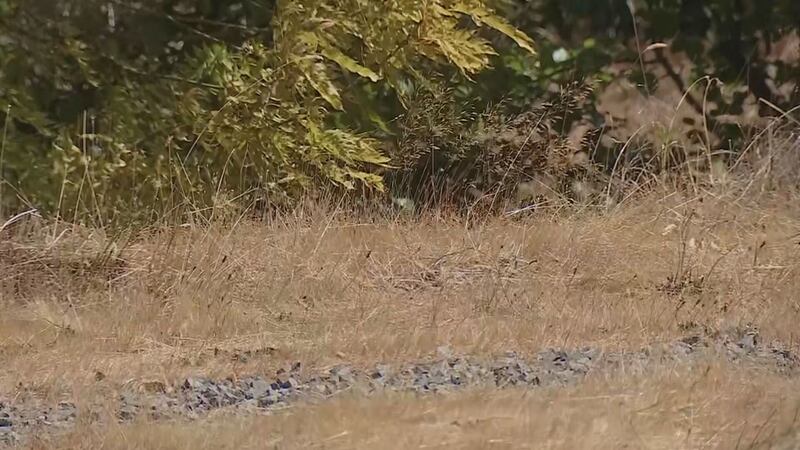A week ago, today the weather service in Hawaii issued a red flag warning around Lahaina due to dry lands, gusty winds, and low relative humidity. The fire claimed the lives of over 90 people and is considered the deadliest fire in the United States, at least in the past century. And unfortunately, that tragic fire serves as a reminder that for us here at home, we have to take critical fire weather conditions and our own red flag warnings seriously.
As of Monday and Tuesday, a red flag warning is in effect around the western slopes of the North and Central Cascades. The warning is mainly due to drier and warmer weather. While the warning does not impact lowland areas around western Washington, critical fire weather conditions are still present.
The leading cause of wildfires in the country, even here at home, is humans. Usually, lightning strikes follow that. But in cases, like Lahaina, it’s believed that a downed powerline was the source of the wildfires after Hurricane Dora’s winds blew through the island. While the Pacific Northwest doesn’t get strong winds from a hurricane, occasionally, we do get something else.
KIRO 7 Pinpoint Meteorologist, Nick Allard told us, “There are literally some gaps in the Cascades where wind will funnel through and increase in intensity so you can have very strong winds in the Cascade foothills or East Puget Sound lowlands.”
They’re called ‘Cascadia Gap Winds’ and they can move at speeds between 40-60 mph.
“I’ve seen some storms cause some real issues when you get a Cascadia Gap Wind event,” said Allard.
While these winds can happen during these warm summer months, fire agencies say wind, no matter what the speed, is not a friend to any fire departments.
Breezy winds were felt in Bonney Lake Monday afternoon. The Assistant Chief with East Pierce Fire and Rescue, Bill Sandlian told us this was a concern because, “Any type of spark it’s going to spread faster, especially in the finer fuels.”
In just the last six weeks we’ve learned East Pierce Fire and Rescue has responded to 91 fires, with 75 of them being vegetation fires. Numbers like that mean the department has been averaging 12.5 fires on a weekly basis.
Fortunately, Assistant Chief Sandlian said that at the county level, there’s more thought and resources being put towards better firefighting efforts.
“We have a county resource plan already in place so if a big event does pop off those plans are already in place, and we follow the playbook and get those resources we need and order them early,” said Sandlian.
When asked for an example of how that plan works, he said, “A large Brush 1 response is what we call it. You’ll get four engines, two brush trucks, a tender truck, and a battalion chief to respond.”
That number is double if the incident is larger than initially reported and anything larger than that there’s a group made up primarily of fire professionals to help assemble further resources should that be deemed necessary.
Now a fun fact about the tender trucks, they’re essentially a water tank on wheels. Station 111 has its own truck, and it holds about 2,000 gallons of water. In Orting, they have two, both holding about 3,000 gallons of water. Using the car/brush fire on State Route 410 last week for reference, 1,700 gallons were used and that was an incident assistant Chief Sandlian told us was “under control pretty quickly.”
As the drier and warmer weather persists this week, make sure to monitor burn bans in your area and be mindful of any fire-inducing activities.
©2023 Cox Media Group








